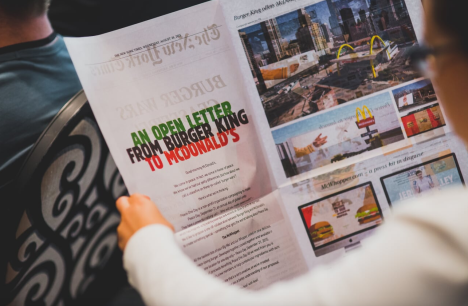How to make a McWhopper and put your competition on notice
At the recent CommsCon conference Josh Moore and Jono Key from Y&R New Zealand presented on the acclaimed McWhopper campaign for Burger King. This week the unlikely recipe was hailed at The Andys in New York, named Best in Show – a first for New Zealand. Alex Hayes reheats the take-outs from the session.
What is a McWhopper – half McDonald’s Big Mac and half Burger King’s Whopper – actually worth?
About $182m in earned media and 8.9 billion media impressions, apparently.
Last August the world’s media was captivated by an audacious offer extended by Burger King to fierce rivals and market leaders McDonald’s in the US – join with us to make a McWhopper in aid of charity Peace One Day, for World Peace Day.


Well done boys and girls on getting it done.
Proud of you all for being brilliantly stubborn.
Who knew?